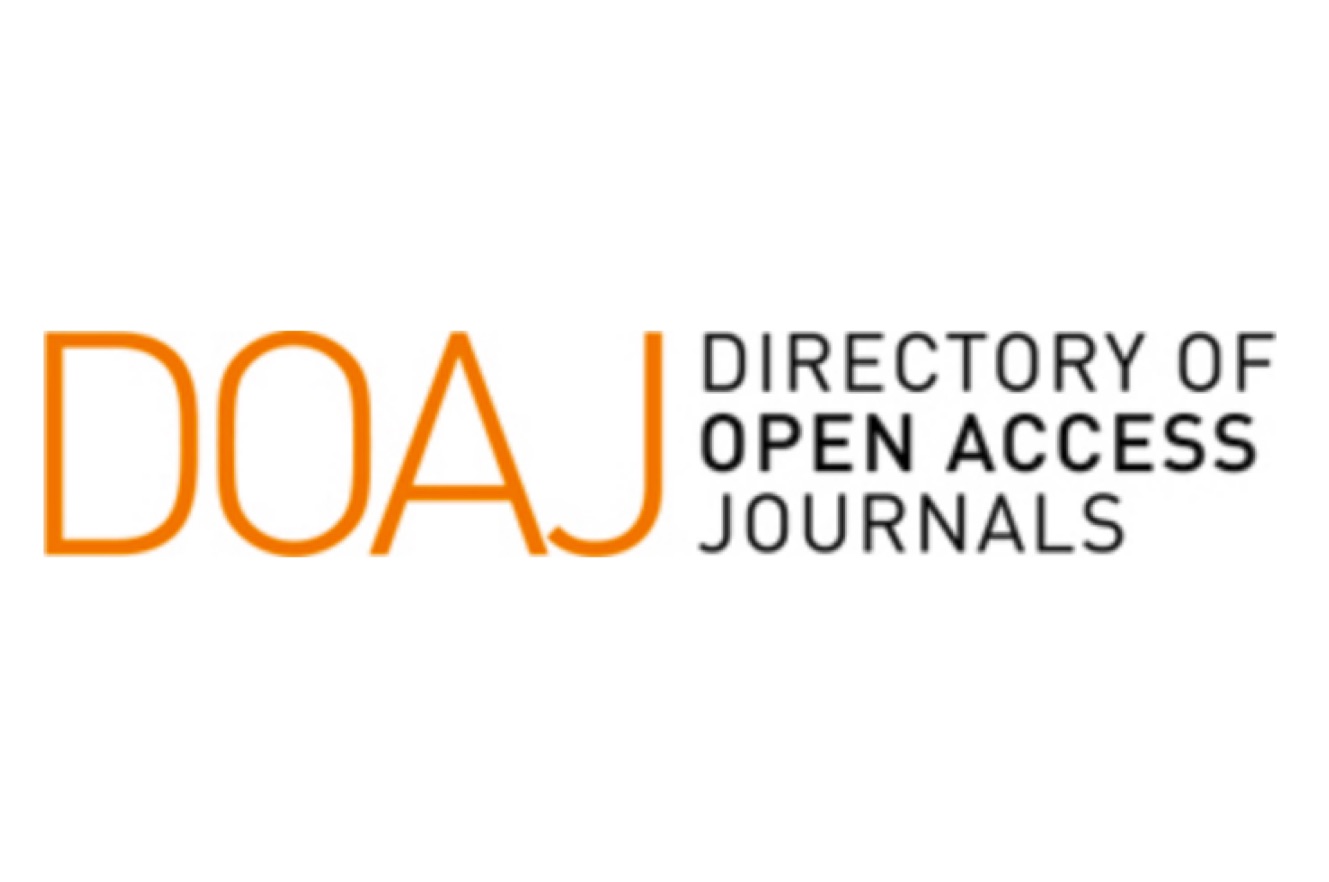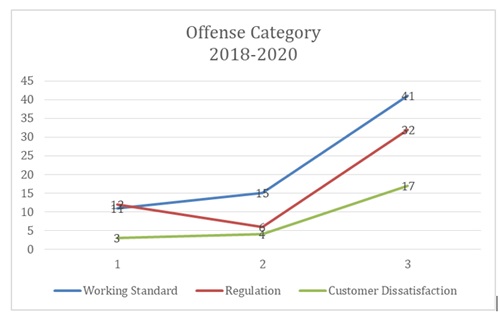OPTIMASI PENYUSUNAN BARANG DALAM RANGKA MENINGKATKAN UTILITAS AKTIVITAS LOADING MENGGUNAKAN SOFTWARE CUBE IQ DI PT.ASR
Downloads
Abstract
Loading into containers must consider the level of efficient use of container space. The use of empty space and the arrangement of goods in containers that have not been optimal are problems in the process of loading goods. In this regard, the plan for the preparation of goods to be made by researchers is assisted with a software that will facilitate the optimal arrangement of goods arranged in containers. The parameters are reviewed from the aspect of purpose, weight, volume, and type of goods to see whether the optimal use of goods. Cube IQ became the software chosen to help implement the system in this study by determining the coordinates and 3D visualization of the arrangement of goods in containers. Goods data and container data become the data used in the simulation process. Dimensions (length, width, height) define the required item data. While dimensions (maximum weight and volume of containers) defines the required container data. After simulating the Cube IQ software there was an increase in the use of container capacity by 88.35% while manually only 87.91%. The implication is a decrease in distribution costs per unit, which is 0.5%. The optimization results obtained are expected to be able to provide input in making decisions determining the optimal arrangement of goods and fleet numbers.
Abstrak
Pemuatan ke dalam kontainer harus mempertimbangkan tingkat efisiensi penggunaan ruang kontainer. Penggunaan ruang kosong dan penyusunan barang dalam kontainer yang belum optimal menjadi permasalahan proses muat barang. Berkaitan dengan hal itu, rencana penyusunan barang yang akan dibuat oleh peneliti dibantu dengan suatu perangkat lunak yang akan memudahkan simulasi penataan barang yang optimal pada kontainer. Parameter ditinjau dari aspek tujuan, berat, volume, dan jenis barang untuk melihat optimal tidaknya penyusunan barang. Cube IQ menjadi software yang dipilih untuk membantu mengimplementasikan sistem dalam penelitian ini dengan penentuan titik koordinat dan visualisasi 3D penataan barang pada kontainer. Data barang dan data kontainer menjadi data yang digunakan pada proses simulasi. Dimensi (panjang, lebar, tinggi) mendefinisikan data barang yang diperlukan. Sementara dimensi (berat dan volume maksimum kontainer) mendefiniskan data kontainer yang diperlukan. Setelah dilakukan simulasi dengan software Cube IQ terdapat peningkatan penggunaan kapasitas kontainer sebesar 88,35% sedangkan secara manual hanya 87,91%. Implikasinya terjadi penurunan biaya distribusi per unit yaitu sebesar 0,5% Hasil optimasi yang diperoleh diharapkan mampu memberi masukan dalam pengambilan keputusan menentukan penyusunan barang dan jumlah armada yang optimal
Downloads
M. A. Salam and S. A. Khan, "Simulation based decision support system for optimization: A case of Thai logistics service provider,” Ind. Manag. Data Syst., vol. 116, no. 2, pp. 236–254, 2016, doi: 10.1108/IMDS-05-2015-0192.
R. Oktarina, "Aplikasi Software Cube Iq Dalam Aktivitas Loading ( Studi Kasus : Pt X ),” vol. 2010, no. Snati, pp. 63–67, 2010.
F. Biaya, D. A. N. Fisik, and D. I. Pt, "Usulan Pemilihan Alternatif Tipe Crane Berdasarkan Faktor Biaya Dan Fisik Di Pt. Xyz,” J. Tek. Ind. USU, vol. 4, no. 2, pp. 19–25, 2013.
N. R. Andriyani, "Penentuan Rute Pendistribusian Produk Cat Menggunakan Capacitated Vehicle Routing Problem (CVRP) Dengan Mempertimbangkan Kapasitas Alat Angkut Berdasarkan Dimensi Kubikasi.” Universitas Pasundan, Bandung, 2019.
W. Kocjan and K. Holmström, "The Autopack project Algorithms for container loading Department of Mathematics and Physics Mälardalen University,” vol. ISSN 1404-, 2010.
J. F. Moura, A., & Oliveira, "An integrated approach to the vehicle routing and container loading problems, Greece. In EURO XX-20th European conference on operational research.,” pp. 1–21, 2014.
N. Kunz, L. N. Van Wassenhove, R. McConnell, and K. Hov, "Centralized vehicle leasing in humanitarian fleet management: the UNHCR case,” J. Humanit. Logist. Supply Chain Manag., vol. 5, no. 3, pp. 387–404, 2015, doi: 10.1108/JHLSCM-07-2015-0034.
A. Tan, O. P. Hilmola, and D. H. Binh, "Matching volatile demand with transportation services in Vietnam: A case study with Gemadept,” Asia Pacific J. Mark. Logist., vol. 28, no. 1, pp. 160–174, 2016, doi: 10.1108/APJML-05-2015-0079.
W. Gazali and N. I. Manik, "Perancangan Program Simulasi Optimasi Penyusunan Barang dalam Kontainer menggunakan Algoritma Greedy,” J. Mat Stat, vol. 10, no. 2, pp. 100–113, 2010.
M. J. Suherlan, "Pengubahan Bentuk Kemasan Produk Untuk Meningkatkan Penggunaan Kapasitas Kontainer Dalam Pengiriman Produk Minuman Di PT XYZ,” vol. 2, no. 2017. Universitas Widyatama, Bandung, pp. 227–249, 2018.
JMIL Jurnal Manajemen Industri dan Logistik (Journal of Industrial and Logistics Management) is an Open Access Journal. The authors who publish the manuscript in JMIL Jurnal Manajemen Industri dan Logistik agree to the following terms:

JMIL Jurnal Manajemen Industri dan Logistik is licensed under a Creative Commons Attribution 4.0 International License. This permits anyone to copy, redistribute, remix, transmit and adapt the work provided the original work and source is appropriately cited.
This means:
(1) Under the CC-BY license, authors retain ownership of the copyright for their article, but authors grant others permission to use the content of publications in JMIL Jurnal Manajemen Industri dan Logistik in whole or in part provided that the original work is properly cited. Users (redistributors) of JMIL Jurnal Manajemen Industri dan Logistik are required to cite the original source, including the author's names, JMIL Jurnal Manajemen Industri dan Logistik as the initial source of publication, year of publication, volume number, issue, and Digital Object Identifier (DOI); (2) Authors grant JMIL Jurnal Manajemen Industri dan Logistik the right of first publication. Although authors remain the copyright owner.




























